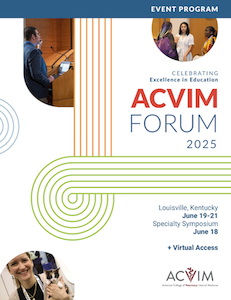Small Animal Internal Medicine
(P04) Fluoroquinolones Are a Risk Factor for Cranial Cruciate Ruptures in Retrievers
Thursday, June 19, 2025
5:30 PM - 7:00 PM ET
Location: Exhibit Hall Poster Park - Poster Stand
- KK
Kate KuKanich, DVM, PhD, DACVIM (SAIM)
Professor
Kansas State University
Manhattan, KS, United States
Research Abstract - Physical Poster Presenter(s)
Abstract: Background- Cranial cruciate ligament rupture (CCLR) is common in Retrievers, producing lameness and often requiring surgery and rehabilitation. In humans, fluoroquinolones and glucocorticoids have been associated with tendon rupture and ligament damage. Hypothesis- A higher proportion of retrievers with CCLR would have previous exposure to fluoroquinolones or glucocorticoids than retrievers without CCLR. Animals- Labrador and Golden Retrievers and Retriever-crosses, 2-12 years-old, from Kansas State University and Washington State University with CCLR (N=218, "cases") and without CCLR (N=203, "healthy controls"). Methods- Retrospective, multi-institutional case-control study from 2019-2023. Medical records were reviewed for exposure to fluoroquinolones or glucocorticoids within 6 months of injury or visit (control) or anytime throughout life prior to injury or visit. Data were analyzed using Fisher’s exact test, Wilcoxon rank sum test, and logistic regression. Results- CCLR dogs (37kg) weighed more than controls (32kg) (p< 0.001). Labradors had a higher rate of CCLR (118/218) than Goldens (36/218), (p=0.019). Lifetime fluoroquinolone exposure was reported from 33/218 (15%) cases compared with 10/203 (4.9%) controls (p< 0.001). The odds of CCLR after exposure to fluoroquinolones was 3.063 times (CI 1.283-7.312) higher than the odds of CCLR without fluoroquinolone exposure. Lifetime glucocorticoid exposure was reported from 125/218 (57%) cases compared with 93/203 (46%) controls (p=0.019, but not significant with multivariate analysis). No association was identified between CCLR and use of fluoroquinolones or glucocorticoids within 6 months. Conclusions and Clinical Importance- These data suggest fluoroquinolones are a risk factor for CCLR in retrievers and should be used cautiously in these breeds.


